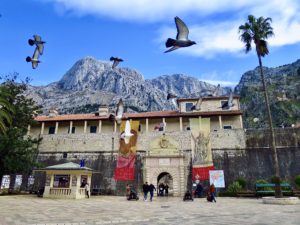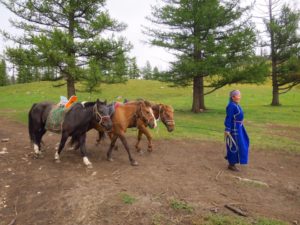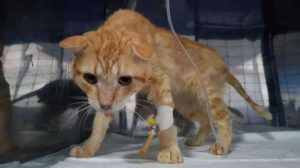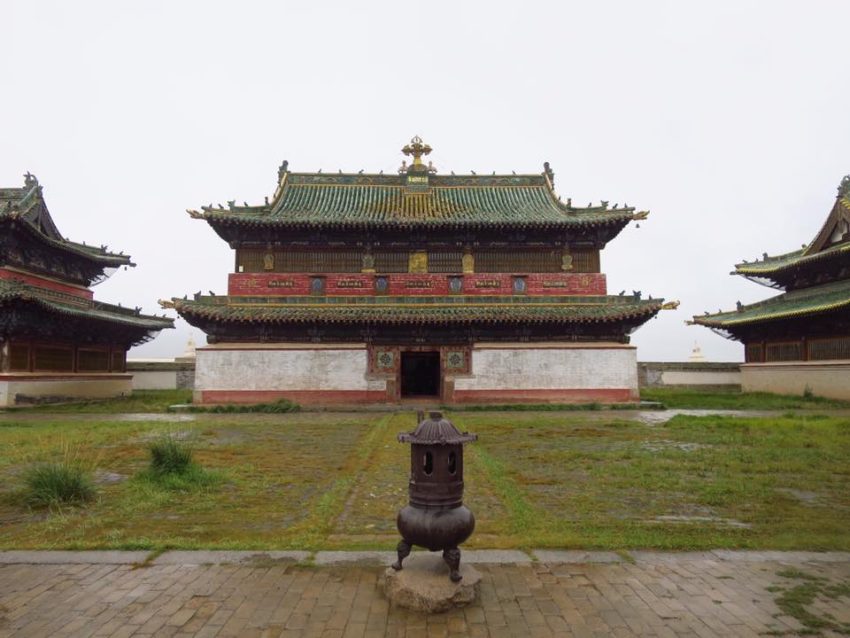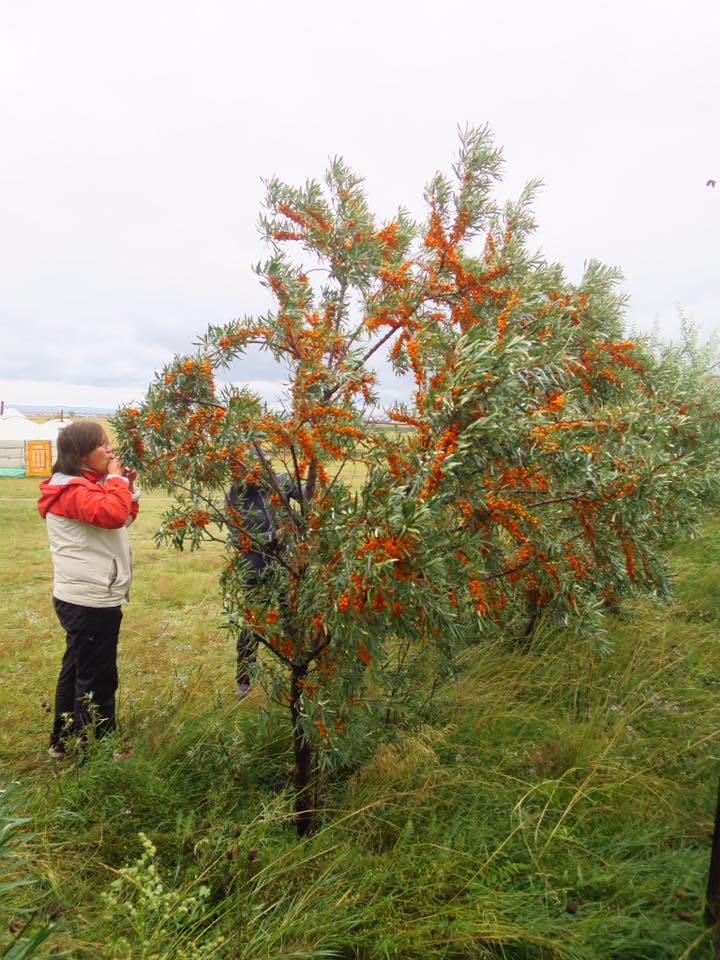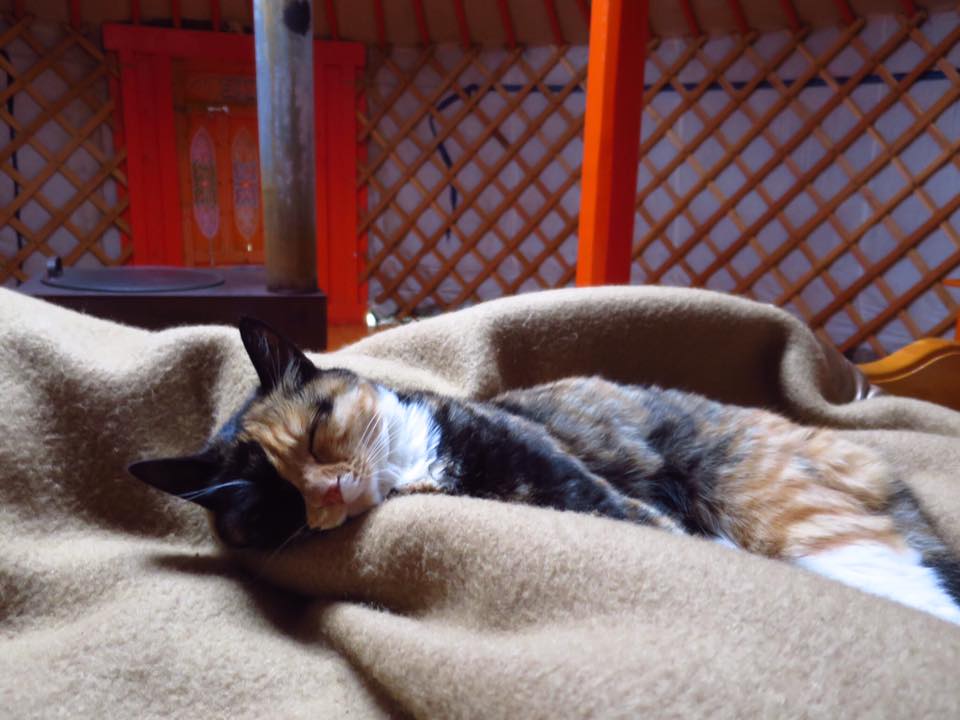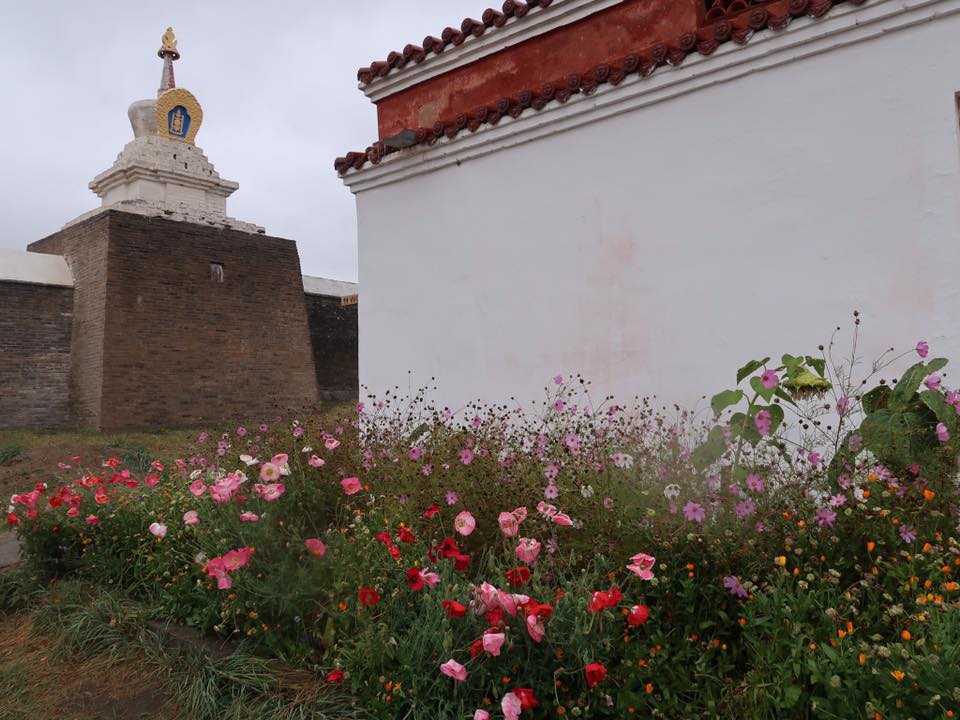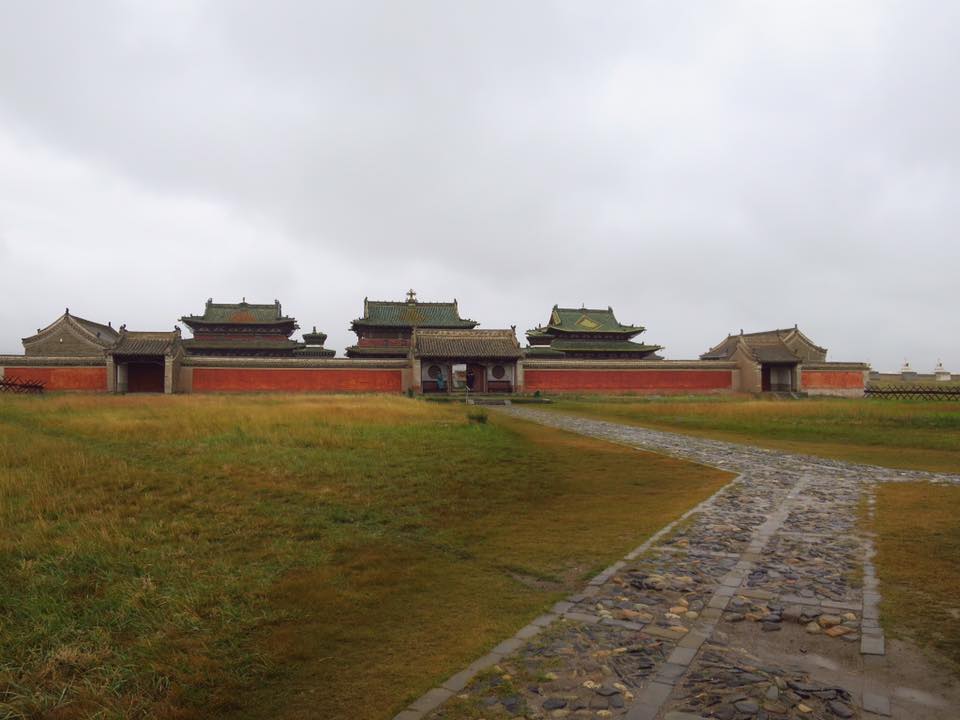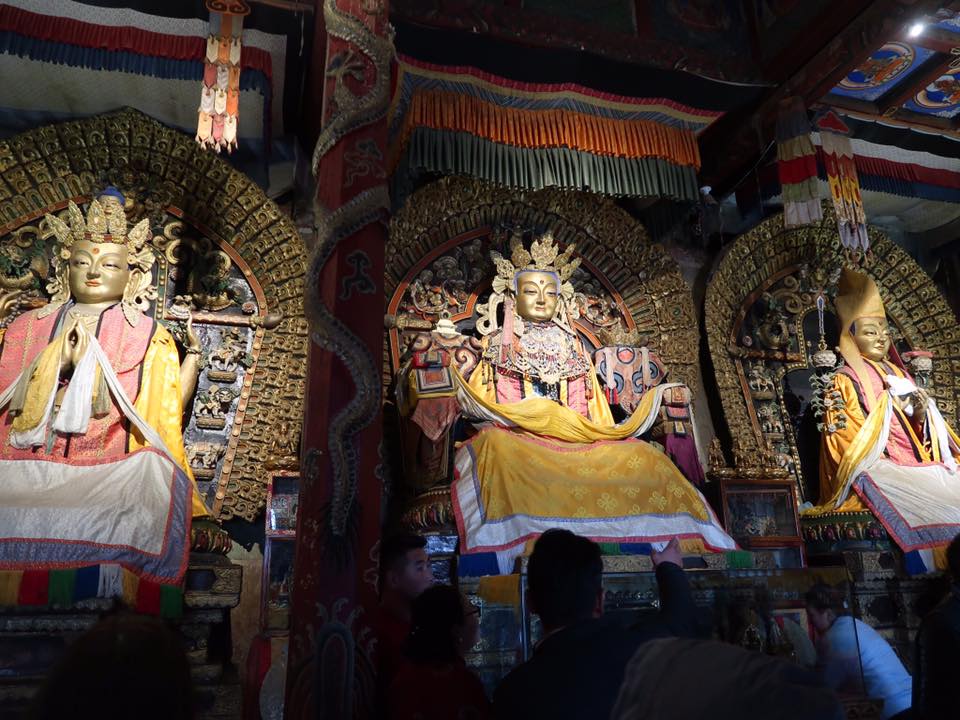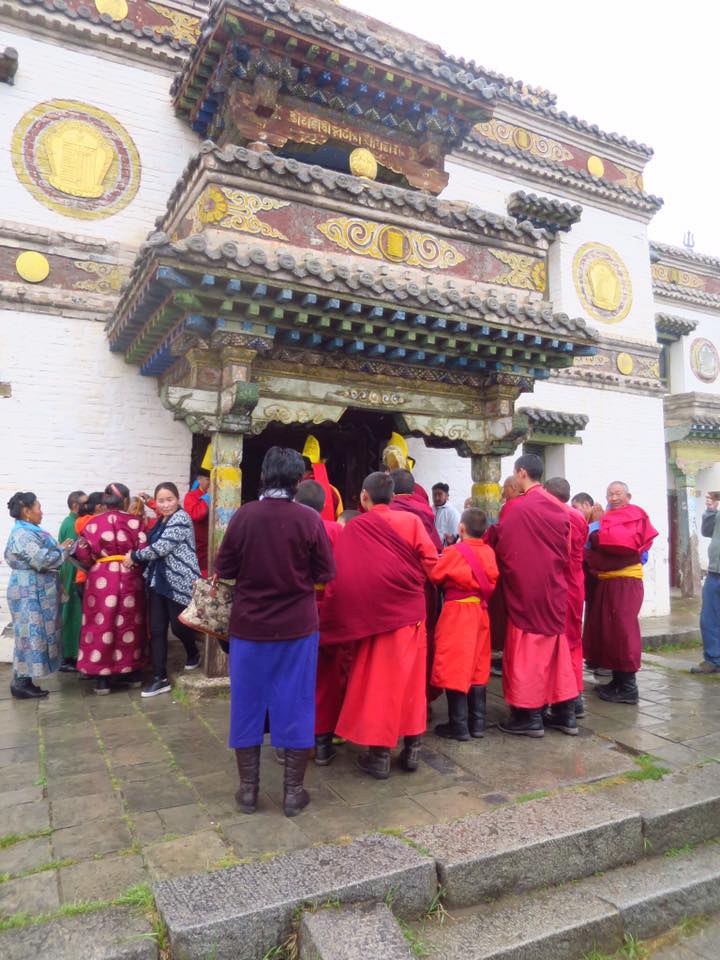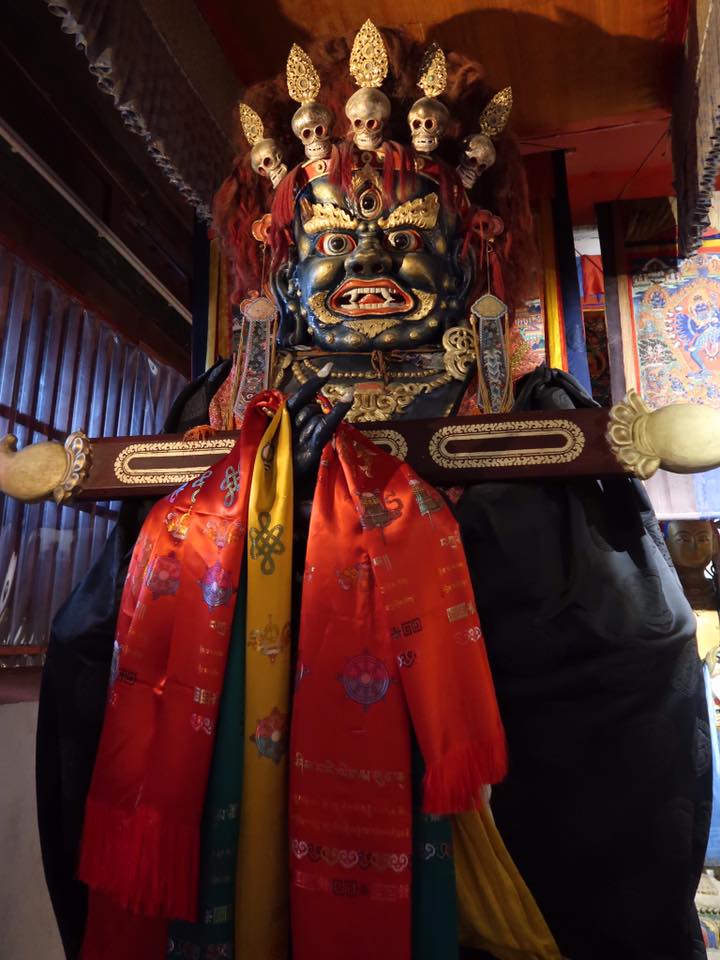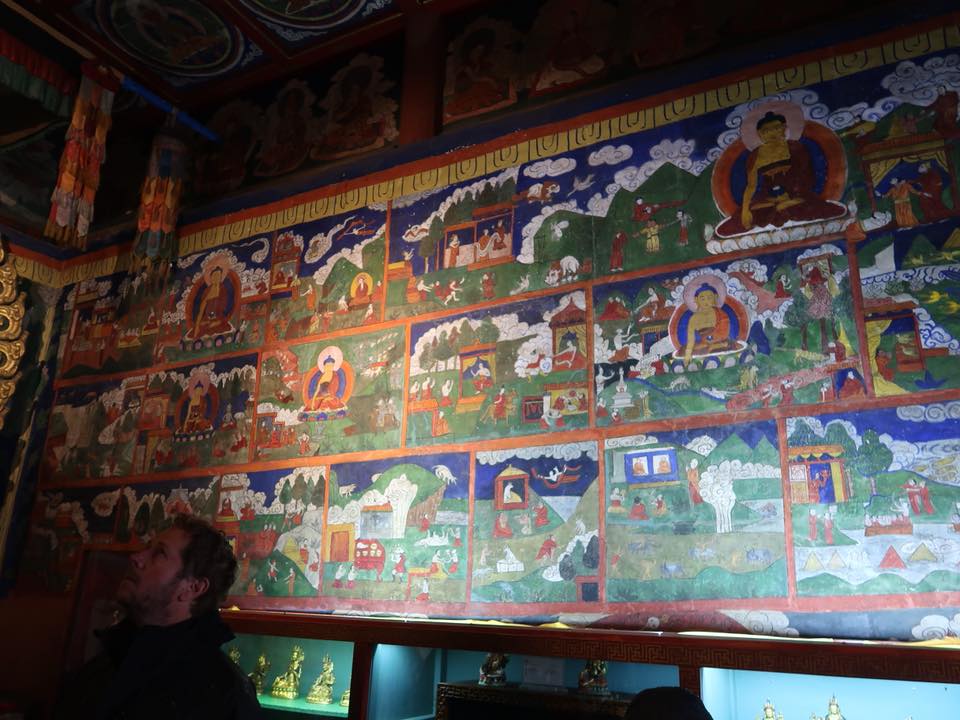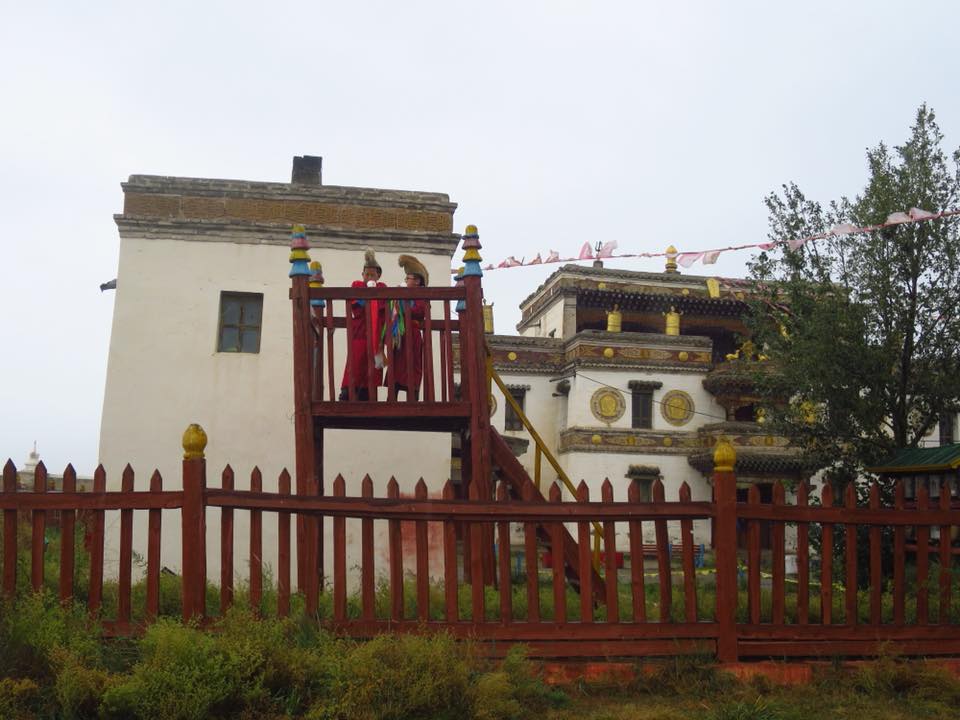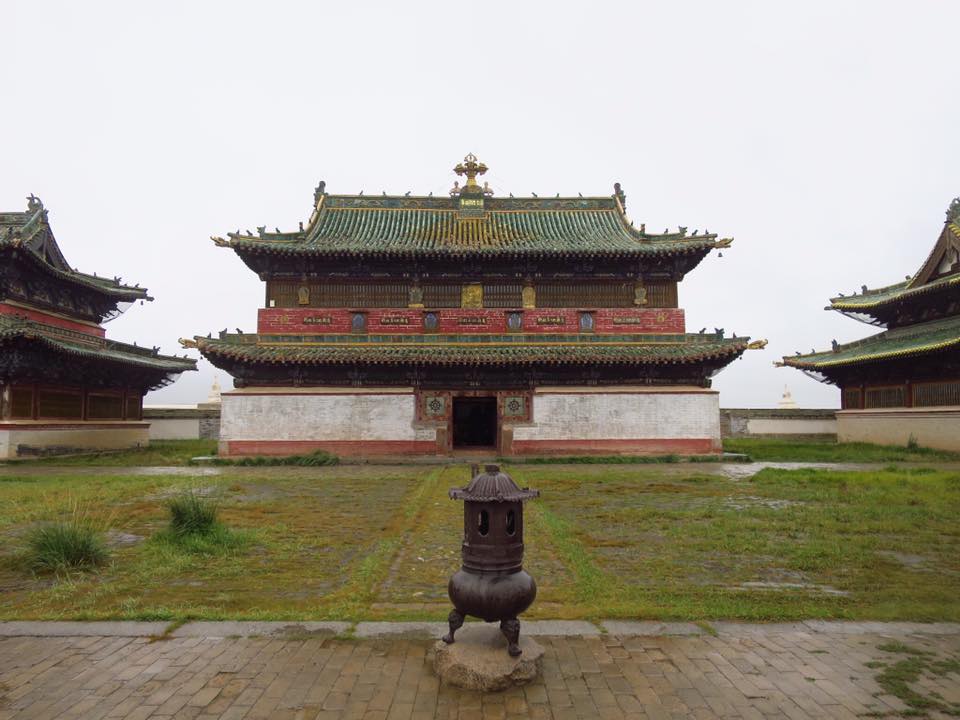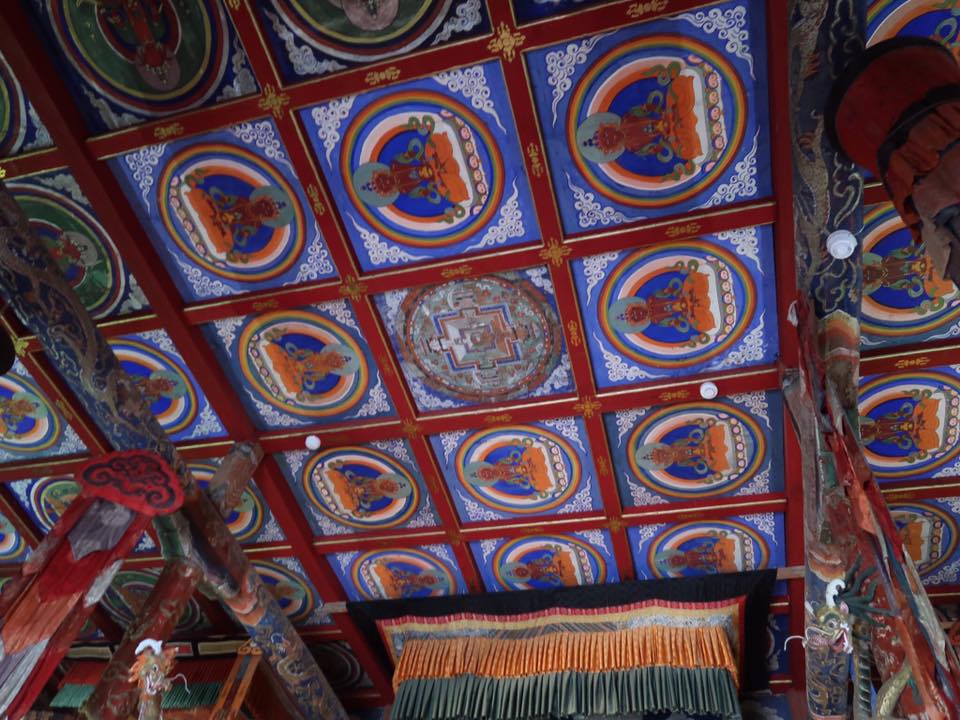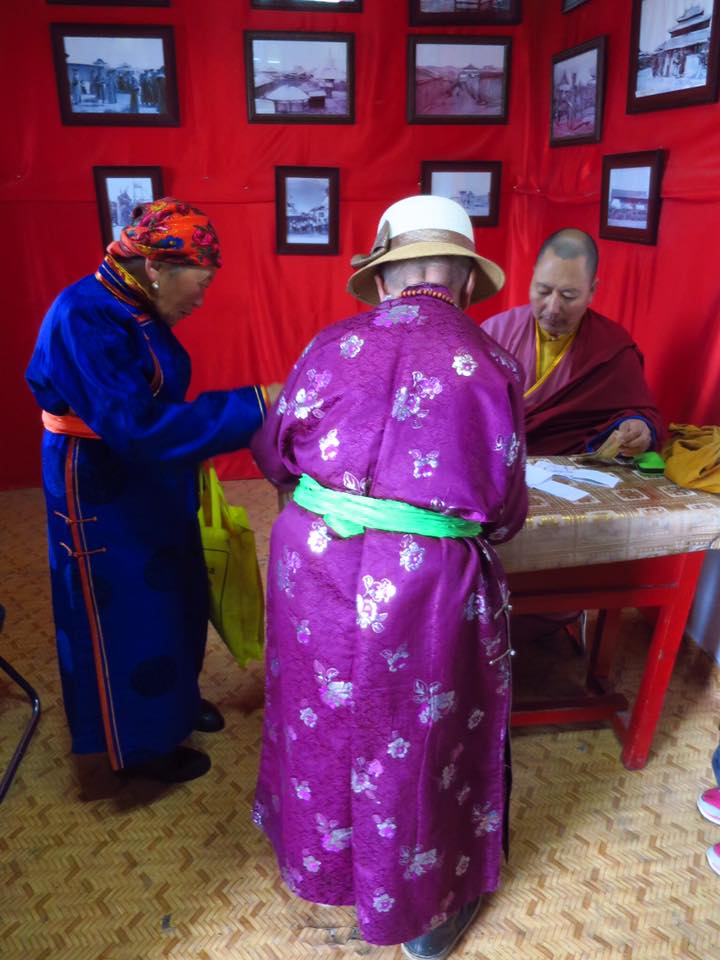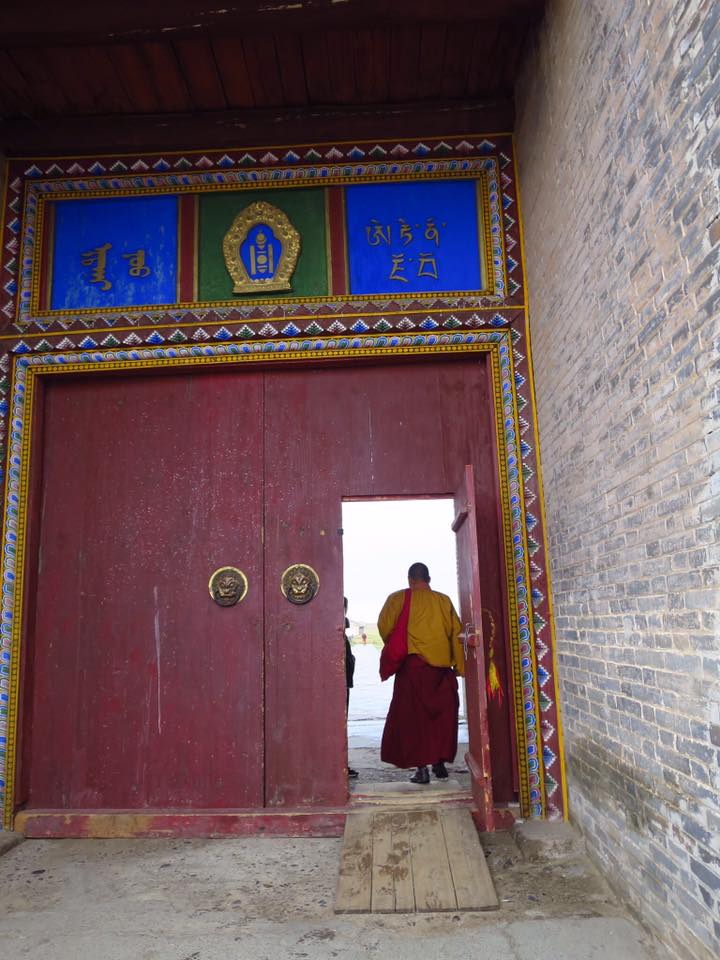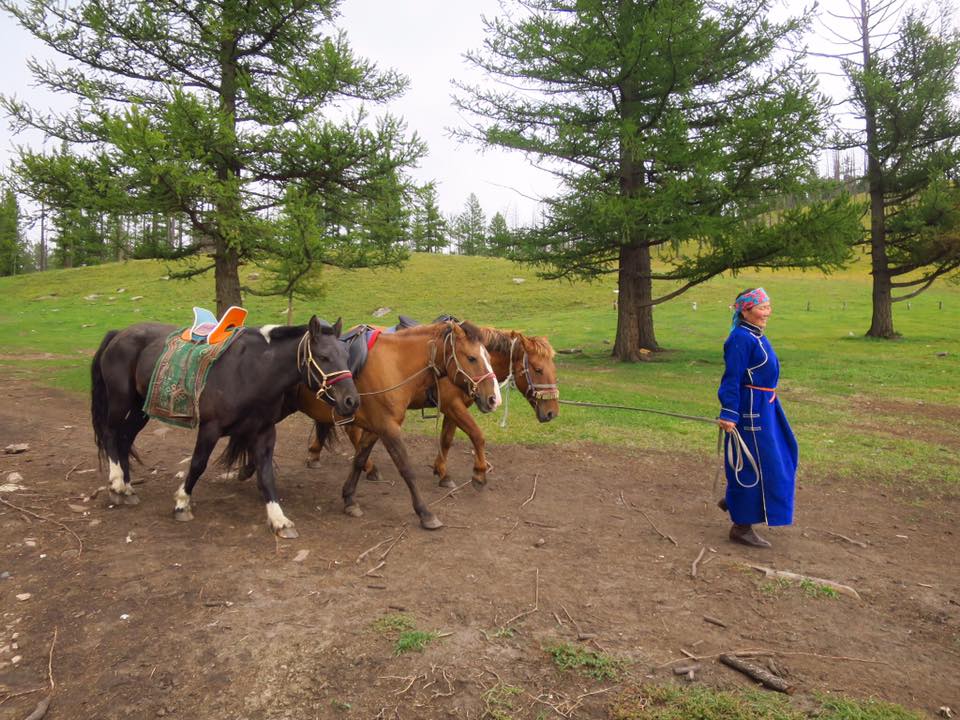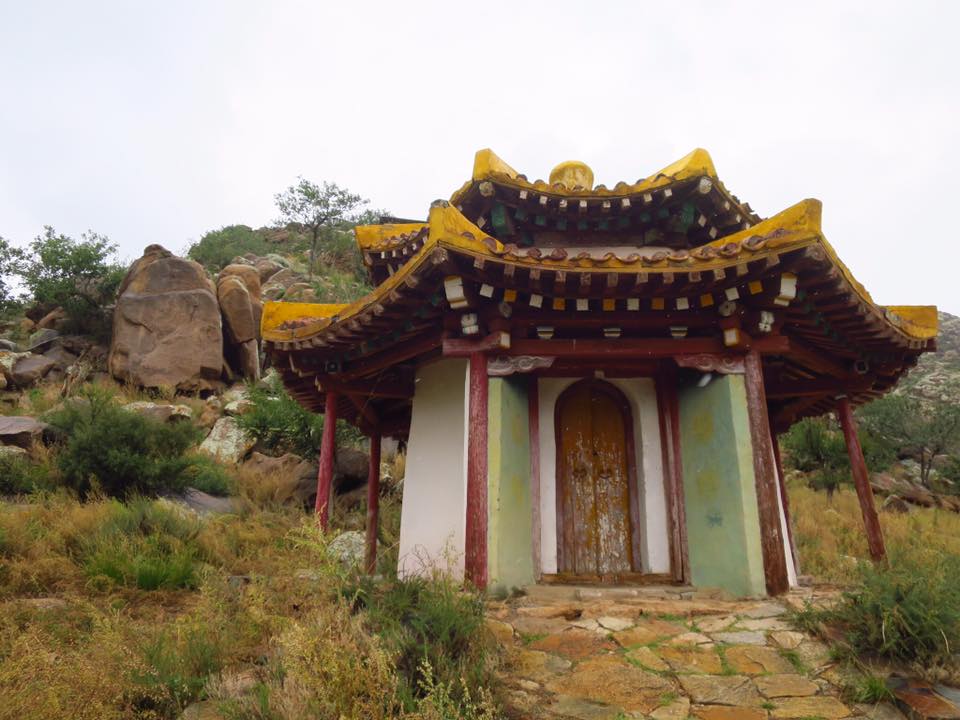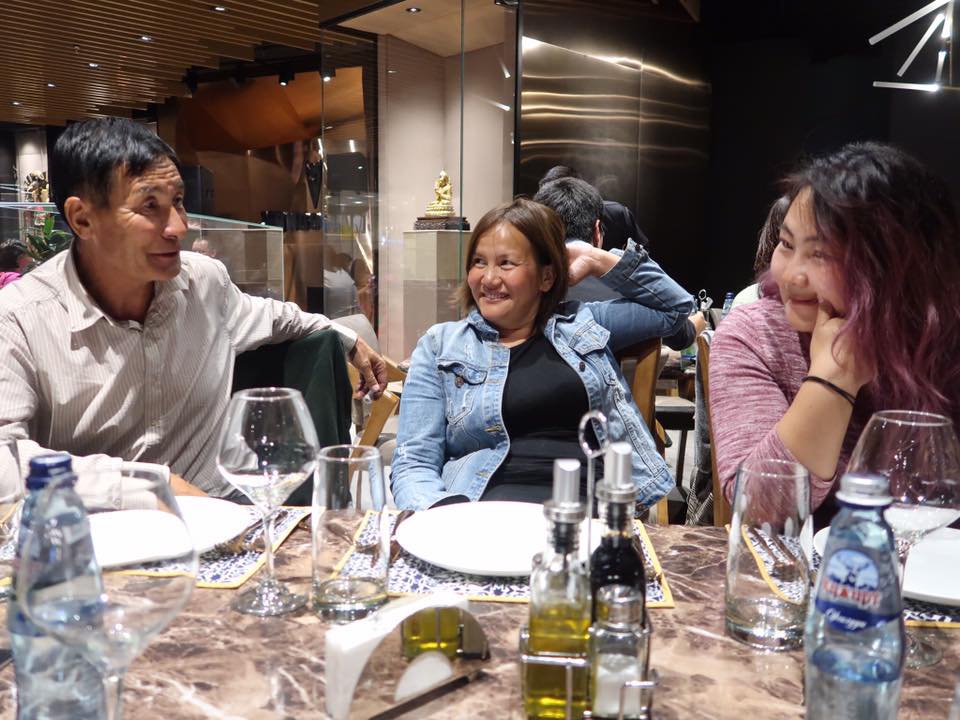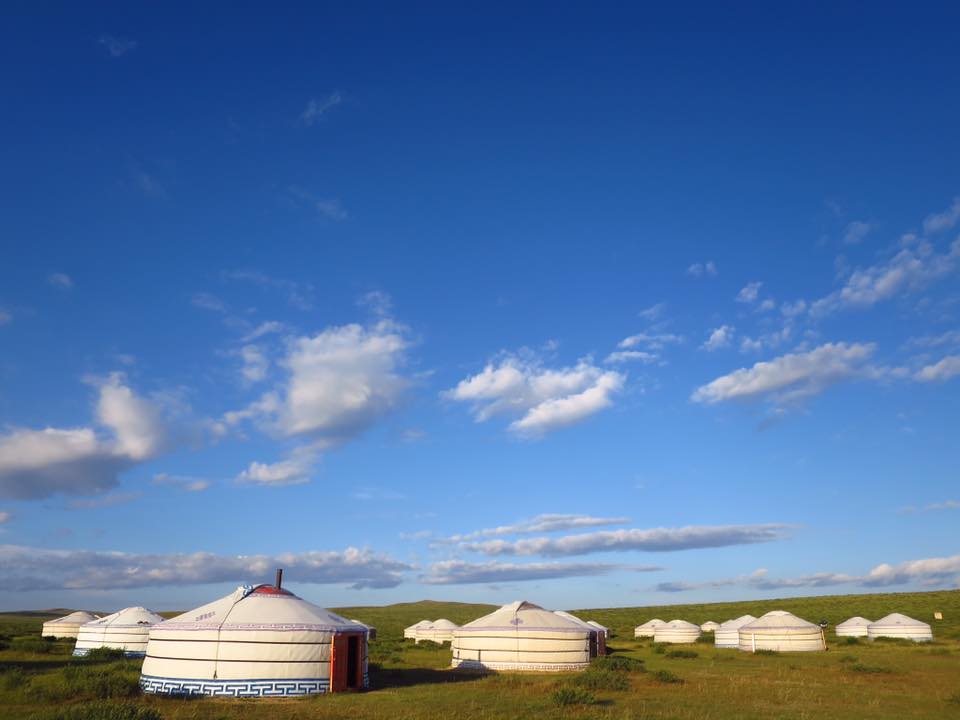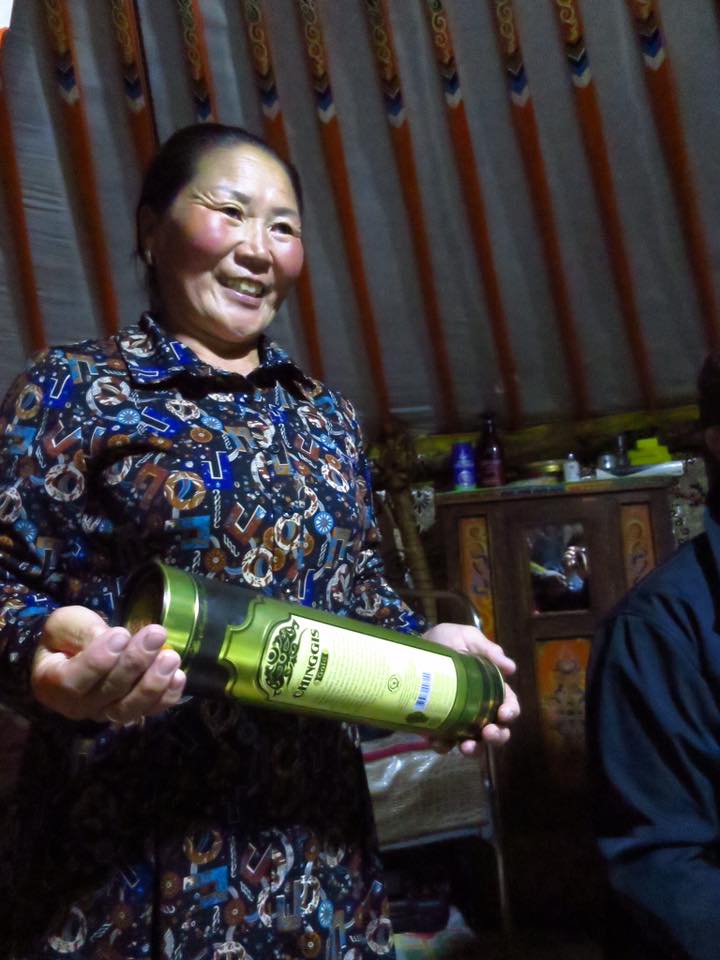Part 6 of 8 – (September, 2018)
Everything felt less cheery after we left Nergui’s family. When the two herders taking a break in the field didn’t wave back, I got even sadder. I must have let out a big sigh because Yuka assured me they were just busy “using the nature toilet”. Ever since, I’ve left all squatting herders in peace.
We spent the night at Anja Camp in Kharkhorin so that we could visit the Kharakhorum Museum and Erdene Zuu Monastery the next day. Once we arrived, Urnaa led us to the sea buckthorn bushes, and told us to start picking and eating the super nutritious berries. They were great.
While in the restaurant ger, Urnaa and I were amused and appalled by a tour guide who was almost scolding his group like they were little children. I was thankful she and Yuka were so nice. The dinner and the staff were nothing to write home about.
I took a long hot shower and couldn’t find my way back to our ger. I forgot who found me wandering in the dark with a white towel turban on my head. When I opened the door in the morning, a beautiful Calico cat jumped into our bed. We felt special, but apparently Kitty had spent the entire night with Steph and Jessie in their ger.
Kharakhorum Museum
It was raining when we arrived at the Kharakhorum Museum. It focuses on Kharakhorum and the surrounding Orkhon Valley. Kharakhorum was the capital of the Great Mongol Empire. Not far from it was the capital of the 8th-century Uighur Empire, Ordubalic, which was actually built on top of the capital of the Gokturk Empire. As early as the 3rd century BCE, the Xiongnu Empire flourished here. In short, the Orkhon Valley is a valuable archaeological site.
It was Genghis Khan (1162 – 1227) who selected the site for Kharakhorum, but it was his successor, Ögedei, who built the city. It served as the capital from 1235 until 1260 when Kublai Khan moved it to Dadu (Beijing) after establishing The Yuan Dynasty in China.
The walled city of Kharakhorum had a gate on each of the four sides. There was a ger section, a section for the Saracenes (the old English term for Arab Muslims) and a section for the Cataians (Cathay is the old English term for China). The Saracenes were either part of a caravan or diplomatic envoy. The traders haggled at the markets, and the diplomats vied for an audience with the Khan. The Cataians were craftsmen who made iron cauldrons, arrowheads, roof tiles and glass beads, among others. There were 11 temples, two mosques, a church, and places for the locals to practice shamanism.
When the Mongols were expelled by the Han Chinese of The Ming Dynasty in 1368, Kharakhorum was revived as the Mongol capital of the Northern Yuan Dynasty (Yuan Dynasty 2.0). Twenty years later, it was sacked and destroyed by the Chinese. Two hundred years later, Zanabazar’s grandfather recycled the building materials from the ruins and built the nearby Erdene Zuu Monastery.
Erdene Zuu
Built in 1585, Erdene Zuu is one of the oldest monasteries in Mongolia. Along the wall surrounding this huge compound are 108 stupas. When we arrived, it had begun to sleet. Two pre-teen novices were sounding the horns; everyone rushed to the prayer hall and followed the small procession of monks inside. The chanting was melodious even though it was all male voices and rather loud. As we exited, we crossed the threshold backwards so that we weren’t turning our backs to Buddha. Kenric made a donation and gave the monk his name to be written on the prayer slip. He doesn’t know what was written on it. I hope he gets a good surprise.
Fake tolerance during the Great Terror
There’s an admission fee and a photo permit fee for the museum part of the compound. The architecture, paintings, statues, quilts were all exquisite. There are a few very beautiful and nicely preserved buildings; many more were destroyed. Similar to other monasteries, they were destroyed by the Oirats in the 17th century, restored, and destroyed again by the communists during the Great Terror in the late 30s. However, thanks to Stalin’s fondness for propaganda, the Mongolian communist leader, Khorloogiin Choibalsan, was ordered to reserve a few buildings to be showcased as a sign of religious tolerance.
In fact, between three and five percent of Mongolia’s population was killed including 17,000 monks, political dissidents, thinkers, nobility, and ethnic minorities including the Buryats and the Kazakhs. Many were sent to the gulags. Monks who were not killed were forcibly laicized (forced to return to civilian life). During his visit in 1944, US Vice President Henry Wallace (VP to Roosevelt) and the press were brought here. In 2003, a mass grave containing up to 1,000 victims was discovered at a construction site in Ulaanbaatar.
Uncle stopped by the police
Uncle got pulled over by the police on our way to the next destination. Yuka and Uncle followed the policemen back to their car. Then, she and I went to the outhouse nearby. We were all very relieved when the policemen returned Uncle’s documents and let him drive away. Throughout the drive, I kept reminiscing about the previous day spent with Nergui’s family.
Headed back in the direction of Ulaanbaatar, we stopped at the big rest stop where we had lunch the first afternoon. Inside the big convenience store, there was yellow tape around the alcohol shelves. As our luck would have it, on top of banning alcohol sales on the 1st of the month when many receive their pension, this province also bans alcohol sales on Wednesdays. We ate sour cream and onion flavored Pringles to get us over that Hump Day.
Read Part 7
Map of Places Visited
loading map - please wait...
 | Sweet Gobi Geolodge http://outofnowhere.asia/sweet-gobi-geolodge/ Ulaanbaatar Улаанбаатар, Mongolia |
 | Erdene Khamba and Ovgon Khiid Monasteries Ulaanbaatar Улаанбаатар, Mongolia |
 | Restaurant in Khujirt Khujirt Өвөрхангай, Mongolia |
 | Ovoo Khujirt Өвөрхангай, Mongolia |
 | Uurtiin Tokhoi Cliff Khujirt Өвөрхангай, Mongolia |
 | Wooden Bridge Bat-Ulzii Өвөрхангай, Mongolia |
 | Nomad Family Bat-Ulzii - Tsenkher Өвөрхангай, Mongolia |
 | Tuvkhun Monastery Bat-Ulzii - Tsenkher Өвөрхангай, Mongolia |
 | Kharakhorum Museum Kharkhorin Өвөрхангай, Mongolia |
 | Erdene Zuu Monastery Kharkhorin Өвөрхангай, Mongolia |
| The table above is listing 10 out of 19 markers (sorted by ID ascending) | |
